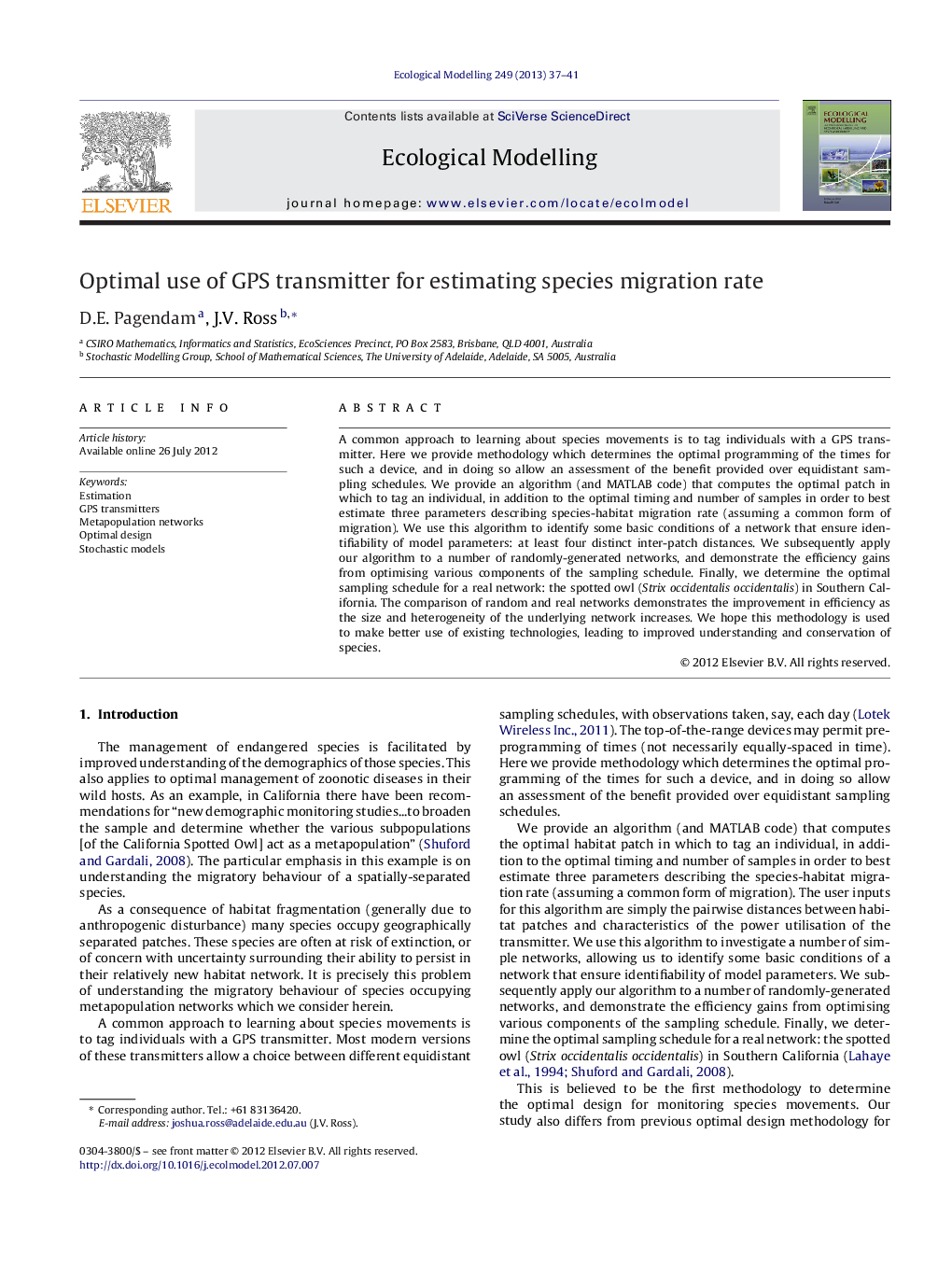| Article ID | Journal | Published Year | Pages | File Type |
|---|---|---|---|---|
| 4376274 | Ecological Modelling | 2013 | 5 Pages |
A common approach to learning about species movements is to tag individuals with a GPS transmitter. Here we provide methodology which determines the optimal programming of the times for such a device, and in doing so allow an assessment of the benefit provided over equidistant sampling schedules. We provide an algorithm (and MATLAB code) that computes the optimal patch in which to tag an individual, in addition to the optimal timing and number of samples in order to best estimate three parameters describing species-habitat migration rate (assuming a common form of migration). We use this algorithm to identify some basic conditions of a network that ensure identifiability of model parameters: at least four distinct inter-patch distances. We subsequently apply our algorithm to a number of randomly-generated networks, and demonstrate the efficiency gains from optimising various components of the sampling schedule. Finally, we determine the optimal sampling schedule for a real network: the spotted owl (Strix occidentalis occidentalis) in Southern California. The comparison of random and real networks demonstrates the improvement in efficiency as the size and heterogeneity of the underlying network increases. We hope this methodology is used to make better use of existing technologies, leading to improved understanding and conservation of species.
► The optimal programming of GPS transmitter for estimating species migration rate is determined. ► Basic conditions of a network for identifiability are reported. ► The optimal design is determined for the spotted owl (Strix occidentalis occidentalis) in Southern California.
